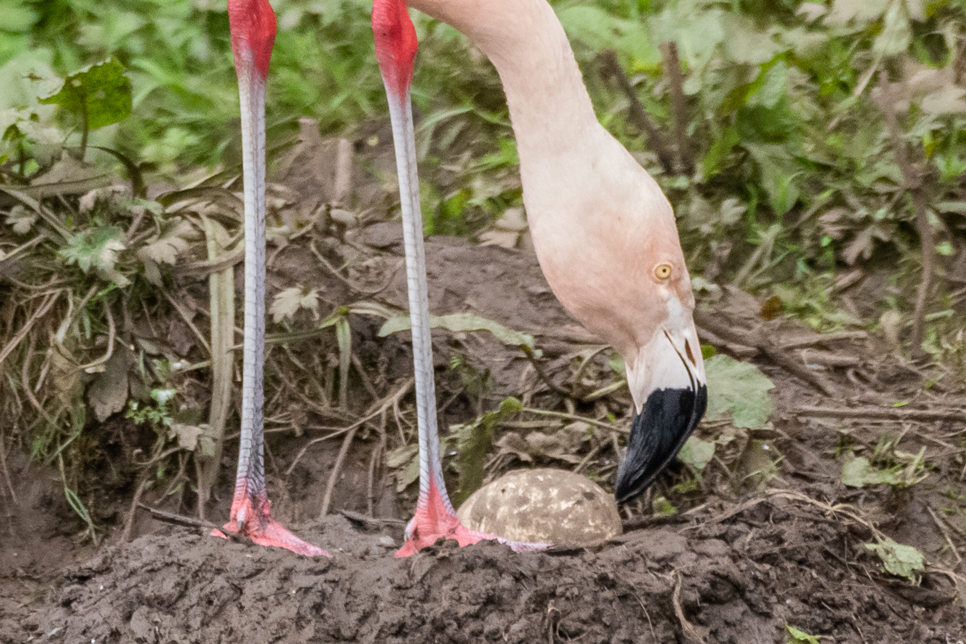Happy Mother's Day to our wetland superstar mams
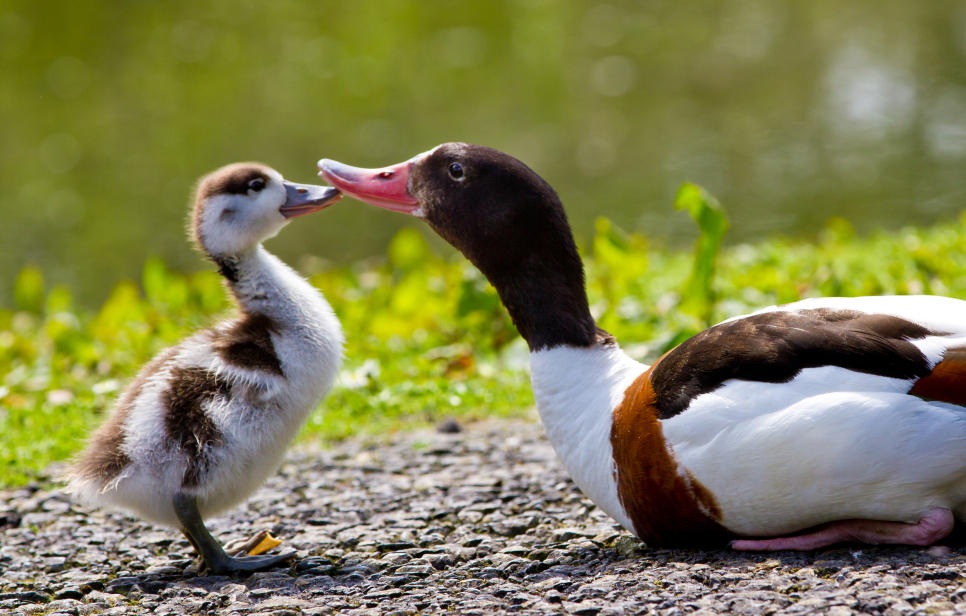
Where would the natural world be without mothers? Without their protective instincts, their self-sacrifice, their love?
This Mother’s Day we pay homage to some wetland superstar mams and of course, give thanks to the ultimate maternal figure looking after us all – Mother Nature herself.
Is that you, mum?
Our mother’s voice is one of the first sounds we ever hear, and it’s no different in the bird world. Mother birds communicate with their chicks while still in the egg so that when they eventually hatch, they recognise her call and feel reassured.
Baby flamingos are particularly noisy just before hatching – a very helpful trait for our living collections team. Flamingos lay just one egg at a time, sometimes years apart, so when a member of our flock produces one, we go into surrogate mother mode to make sure it stays safe.
Carefully swapping the real egg for a convincing dummy, we transfer it to an incubator to protect it from predators or potentially being knocked off its tall mud nest by a wayward wing or leg. In the run-up to hatching, the chick then starts to call out loudly, giving us the sign to pop the real egg back with its mam, who can then bond with her baby before it emerges.
Bright is best
For blue tits, a brightly coloured head equals good mothering skills. According to a study by the University of York, female blue tits with brighter crowns successfully fledge more offspring. The blue colouring of their head feathers is UV-reflective in the eyes of other birds, signalling good maternal qualities to prospective mates. Interestingly, the brighter-headed birds also demonstrated lower stress levels, although we’re not sure how, given that they also had the most youngsters to look after!
We are family
Mimi, the matriarch of our Asian short-clawed otter family, knows first-hand about large broods, having given birth to an amazing nine pups while in our care: Ruby (born in May 2015), Ash, Tod, Pip and Sam (March 2016) and Rita, Irene, Shirley and Buster (March 2017).
In the wild, a litter of ASCO pups will stay with their mother until the next litter is born, at which point they move on to start their own families. Here at WWT Washington, first-born Ruby hadn’t quite made the journey to her new home at Peak Wildlife Park (where she is now a mam herself!) before her siblings were welcomed into the world, giving her the chance to try out the strong mothering instincts passed down to her by Mimi.
Within days of her brother and sister’s arrival, she was observed bringing food to Mimi in the holt while she nursed the new cubs. As they got older, she also helped them learn to get around, swim and find food.
Mimi now lives happily with her partner Musa and their son Buster, who certainly isn’t too cool to be seen hanging around with his loving parents! You can watch them throughout the day rolling around in mud, dexterously juggling pebbles and greeting the public with squeaky cries. Commentated feeds take place at 11.30am and 2.30pm.
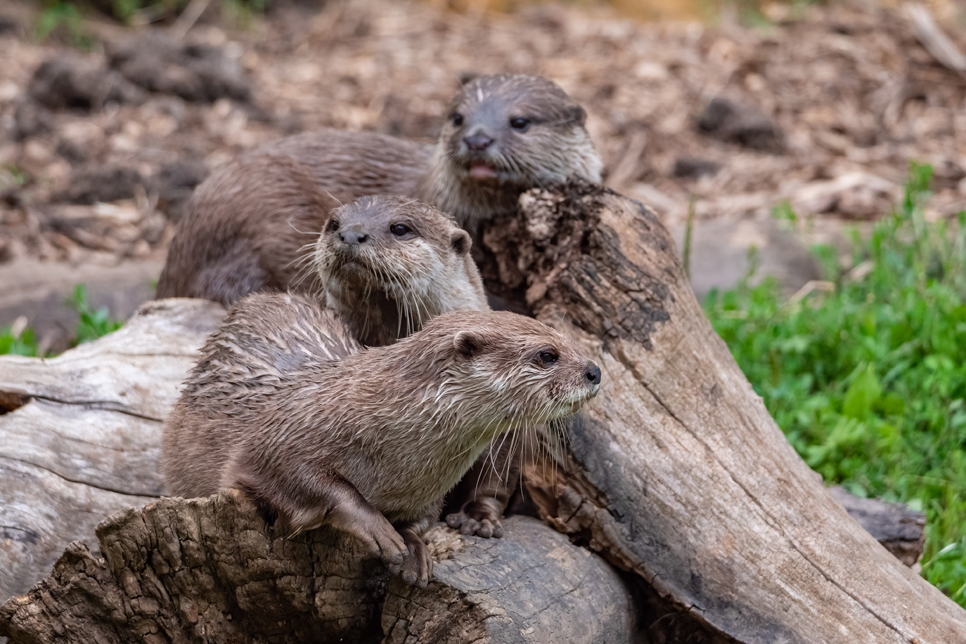
It takes a village
Lucky female swallows are never short of a helping hand – or beak – when it comes to raising their young. Older siblings and even other adults all act as mother’s helpers, assisting with nest-building, incubation and brooding, as well as seeing off predators by defending the nest. Feeding time is an extended family affair too, with brothers, sisters and cousins taking turns bringing insects to the hungry baby chicks.
Keep an eye out from early summer onwards for signs of swallow activity in the barns, hides and buildings around our wetlands. The café veranda is a particularly popular spot for sightings of these beautiful birds zipping back and forth with food to their nest, tucked away in the rafters of the sedum roof above. Now that’s a brew with a view!
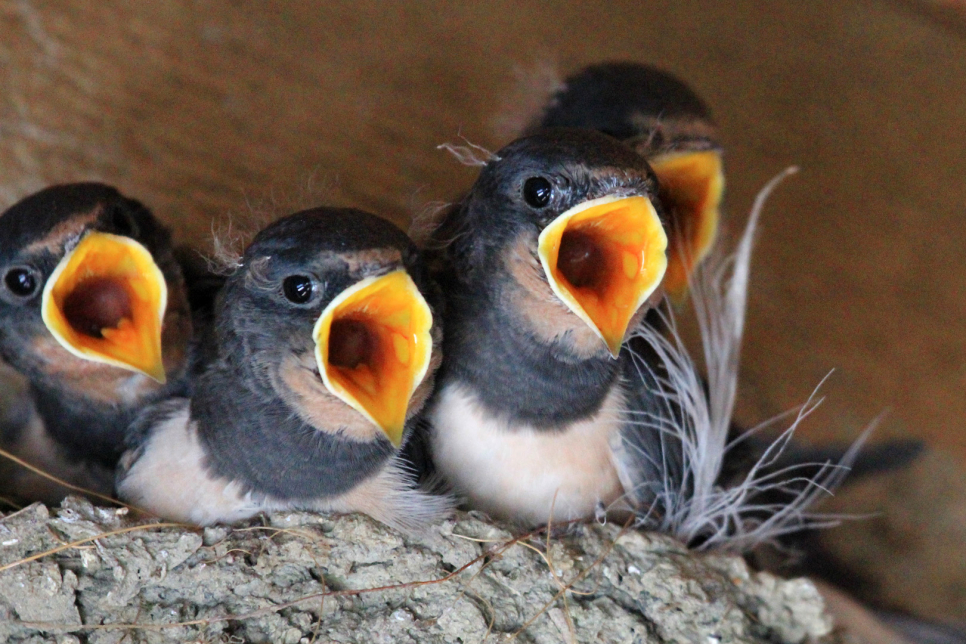
Role reversal
It is well-documented that swans mate for life, but did you also know that they have each other’s backs when it comes to parenting?
Mute swan mothers are typically in charge of the rearing of their cygnets, teaching them to feed and guiding them as they explore, while the male is on high alert for nearby predators or other threats to his new family.
But when it comes time for their annual moult – when old feathers are shed and new ones grow in their place – they take turns to go through the process, with the female stepping into the role of protector while her partner is flightless, as he spends time caring for their youngsters.
New life
Each spring, the shingle islands of Wader Lake are transformed into a hive of activity, with numerous wading bird species jostling for territories, nest-building and hatching chicks.
One of the most charismatic of these is the avocet. A striking black and white wader with a slim upturned bill and delicate legs; an avocet mam may look fragile but boy, is she tenacious.
The avocets return to our wetlands each February, having overwintered anywhere from estuaries on the South coast to places as far away as Spain and Morocco, and are often met with harsh weather conditions, but soon set about courting unperturbed.
After pairing off, they cleverly settle down beneath our grey heron colony to nest, as a way of protecting their imminent young from predators vicariously.
This is a risky bet, given that the herons will also soon have hungry mouths to feed, but worth it on balance. And if you’ve ever seen a feisty mother avocet ward off a potential threat to her brood, you might argue that she doesn’t need such assistance!
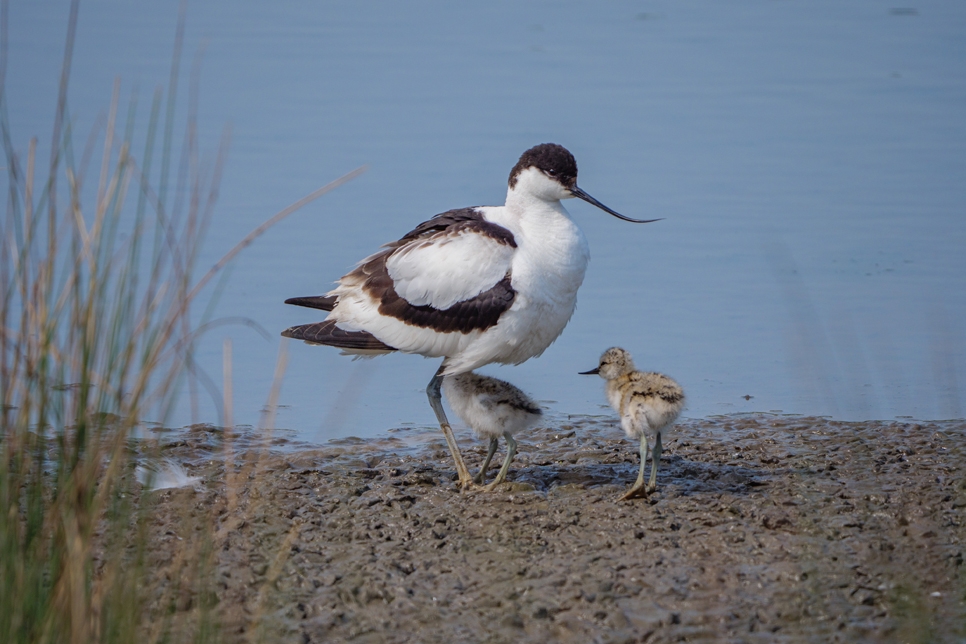
Ready to visit?
Spring is a wonderful time of year to see new life emerging all around our wetlands and watch the females of the many species that call us home become mothers. Why not visit and witness their incredible bonds and journeys up close? Find out more and book your visit online.
Plan your visit